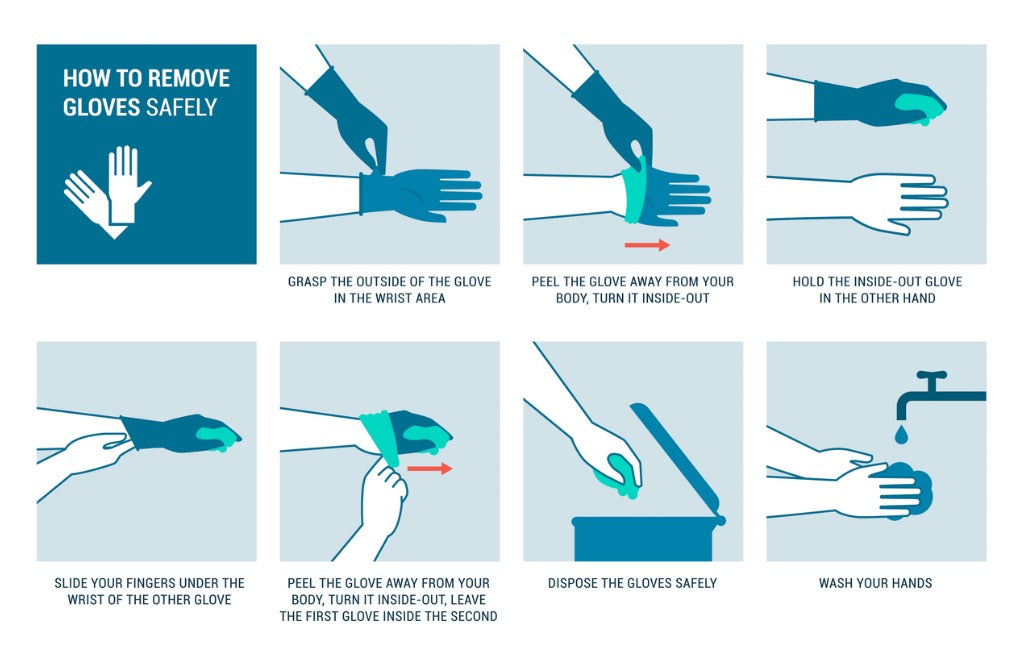Proper removal of disposable gloves is crucial to ensure that you do not inadvertently transfer contaminants to your skin or surrounding surfaces. This process is especially important in environments such as healthcare settings, laboratories, and food handling areas. This article provides a comprehensive guide on how to remove disposable gloves safely to maintain hygiene and prevent contamination.
Introduction
Disposable gloves are designed to provide a protective barrier between your hands and potentially hazardous materials. However, improper removal of these gloves can defeat their purpose, leading to potential contamination. Understanding the correct technique for removing gloves helps ensure that you maintain cleanliness and reduce the risk of spreading germs or contaminants.
Step-by-Step Guide to Removing Disposable Gloves
1. Prepare for Removal
Before removing gloves, ensure that you are in a clean area and have access to a waste disposal bin. If you are in a setting that requires it, have hand sanitizer or handwashing facilities ready. Avoid touching any surfaces or objects that could be contaminated.
2. Pinch and Pull
Start by pinching the outside of one glove at the wrist without touching the bare skin underneath. Pull the glove off, turning it inside out as you remove it. This technique helps to contain any contaminants on the glove’s surface.
3. Hold the Removed Glove
Once the first glove is removed, hold it in the gloved hand. Ensure that the glove’s inside is now on the outside, containing any contaminants. Avoid letting the glove come into contact with your skin or any other surfaces.
4. Remove the Second Glove
Using the ungloved hand, slide your fingers underneath the cuff of the remaining glove. Carefully peel it off, turning it inside out and over the glove that is already in your hand. This technique ensures that both gloves are contained within the first glove and minimizes direct contact with contaminants.
5. Dispose of Gloves Properly
Place the gloves into a designated waste disposal bin. If you are in a healthcare or laboratory setting, use a biohazard waste container if required. Proper disposal helps prevent the spread of contaminants and maintains a clean environment.
6. Wash or Sanitize Hands
After removing and disposing of the gloves, wash your hands thoroughly with soap and water or use hand sanitizer if handwashing facilities are not available. This step is essential to remove any residual contaminants and ensure that your hands are clean.
Common Mistakes to Avoid
1. Touching the Outside of the Gloves
Avoid touching the outside of the gloves, as this can transfer contaminants to your skin. Always handle gloves by the cuff or inside surface to prevent direct contact with potentially hazardous materials.
2. Removing Gloves Too Quickly
Removing gloves too quickly can cause them to tear or release contaminants. Take your time and follow the proper technique to ensure that gloves are removed safely and effectively.
3. Reusing Disposable Gloves
Disposable gloves are intended for single use only. Reusing gloves can lead to contamination and increased risk of infection. Always discard gloves after use and replace them with a new pair if needed.
4. Skipping Hand Hygiene
Failing to wash or sanitize your hands after removing gloves can lead to the transfer of contaminants. Always follow up with proper hand hygiene to maintain cleanliness and prevent the spread of germs.
Conclusion
Removing disposable gloves safely is an essential practice for maintaining hygiene and preventing contamination. By following the correct removal technique and avoiding common mistakes, you can ensure that you minimize the risk of spreading contaminants and protect yourself and others. Always prioritize proper hand hygiene and disposal practices to uphold a clean and safe environment.
Frequently Asked Questions (FAQs)
Can I use the same gloves for different tasks?
No, disposable gloves are designed for single use only. Using the same gloves for different tasks can lead to cross-contamination. Always change gloves between tasks to ensure proper hygiene.
What should I do if gloves tear while I’m wearing them?
If gloves tear, remove them immediately and wash your hands thoroughly. Replace the damaged gloves with a new pair and continue with your tasks following proper hygiene practices.
Are there specific gloves for different types of contaminants?
Yes, different types of gloves offer varying levels of protection against specific contaminants. For instance, nitrile gloves provide resistance to chemicals, while latex gloves may be better for biological hazards. Choose gloves based on the specific requirements of your tasks.
How can I ensure that my gloves are properly disposed of?
Ensure that gloves are disposed of in the appropriate waste disposal container. In healthcare or laboratory settings, use designated biohazard containers if required. Follow local regulations for waste disposal to prevent environmental contamination.
What are the best practices for glove use in a medical setting?
In medical settings, use gloves according to infection control guidelines. Change gloves between patients, use hand hygiene practices, and follow proper disposal protocols to prevent the spread of infections.

